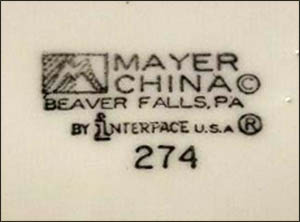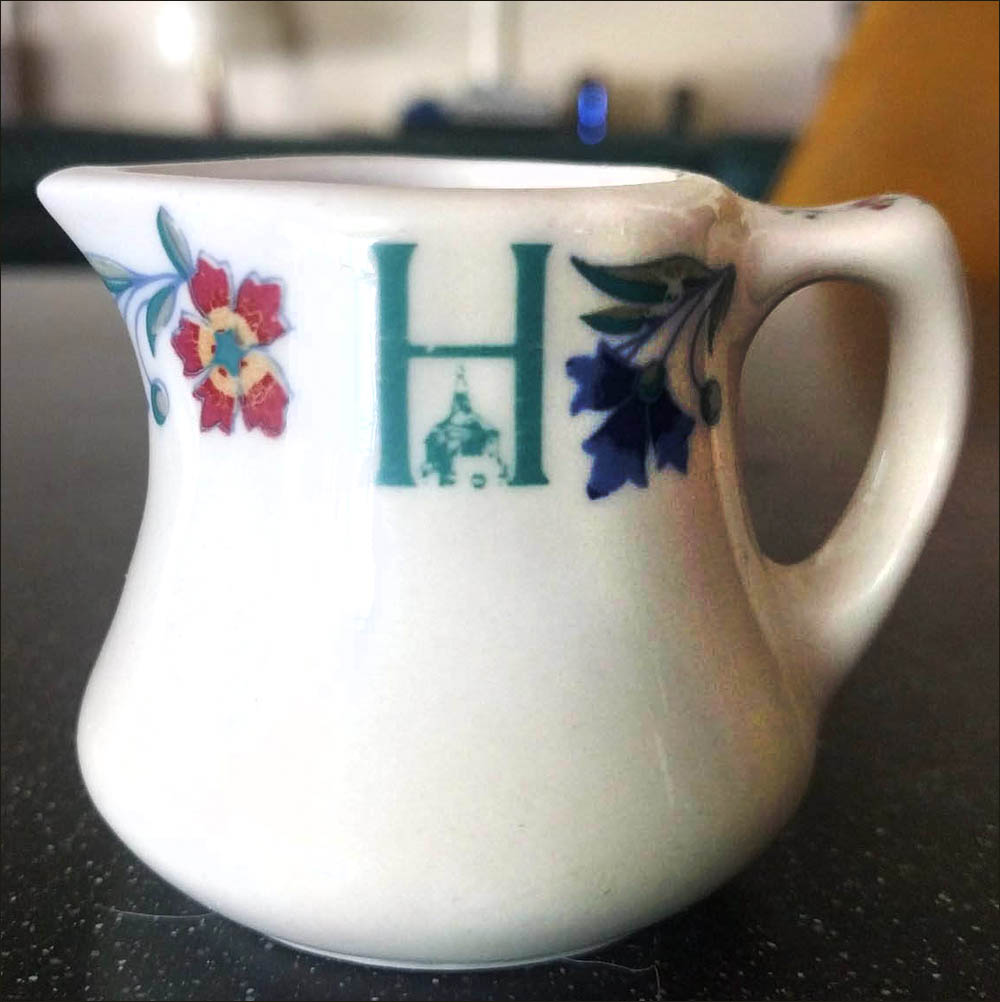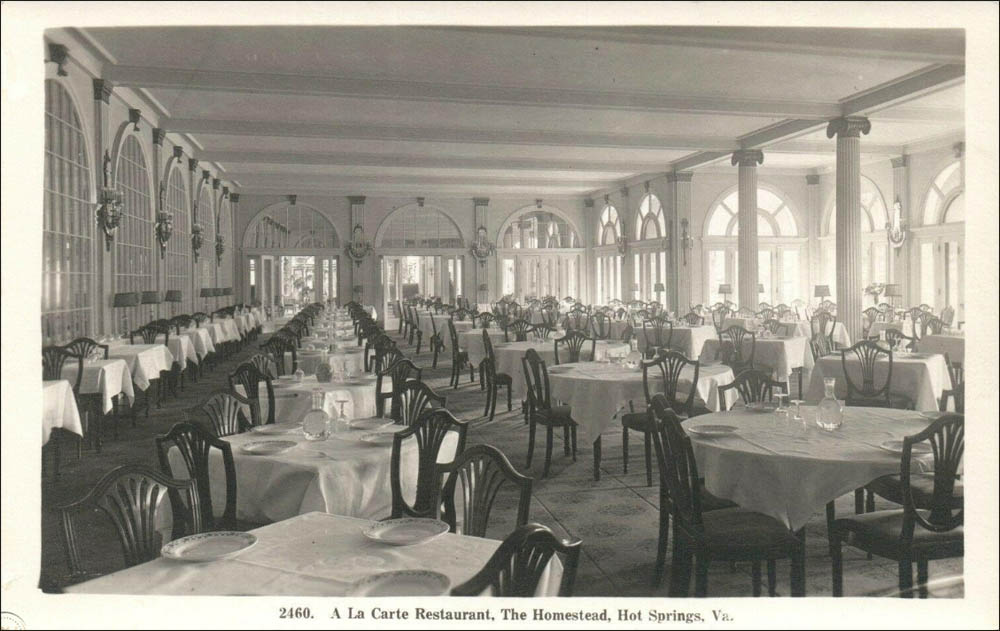Manufacturers: Mayer China, Homer Laughlin China
User: The Homestead, Hot Springs, Va.
Date of Mayer celery tray: 1974
Date of Homer Laughlin creamer: 1986
Notes: Now the massive Omni Homestead Resort (2022), the first building on the site – constructed in 1766 – was an 18-room log hotel on 300 acres west of Virginia's Shenandoah Valley that was called Hot Springs for the mineral "healing" springs found on the land. In the 19th century a wooden hotel was added in stages.
 It was in 1881 that M.E. Ingalls, a lawyer for the Chesapeake and Ohio Railroad Company (who would by 1888 become its president), accidentally happened upon the hotel while surveying the surrounding area for a new rail line. Ingalls in 1891 partnered with financier John P. Morgan and other investors to buy the hotel (without any ownership whatsoever by the C&O) with the company name Virginia Hot Springs Co., and with Ingalls as president.
It was in 1881 that M.E. Ingalls, a lawyer for the Chesapeake and Ohio Railroad Company (who would by 1888 become its president), accidentally happened upon the hotel while surveying the surrounding area for a new rail line. Ingalls in 1891 partnered with financier John P. Morgan and other investors to buy the hotel (without any ownership whatsoever by the C&O) with the company name Virginia Hot Springs Co., and with Ingalls as president.
By 1911, after a major fire in 1901 that spared only a few cottages and the spa building, Ingalls and his family became the sole owners of The Homestead and continued an expansion of the property, with the final major addition added in 1973.
The Homestead was listed on the National Register of Historic Places in 1984, became a charter member of Historic Hotels of American in 1989, and was named a U.S. National Historic Landmark in 1991.
In 1993, The Ingalls family sold ownership to Club Resorts; it was sold again in 2001; and by 2013 it was sold yet again to current owners, Omni Hotels & Resorts.
It was the early ownership by Ingalls – despite there being no financial connection between the resort and the C&O Railroad – that encouraged the false assumption that The Homestead was owned by the railroad. This was unknowingly perpetuated in "Dining on Rails" and "Teapot Treasury" and has added considerable cachet among collectors to china used at The Homestead for only that reason. In particular, its early china with floral border pattern and shield with words "Virginia Hot Springs" (but also this pattern with the green H) has come to be commonly – but erroneously – known as associated with the C&O.
That said, china from The Homestead should not be considered to be railroad china or railroad-related but still beautiful and collectible in its own right as coming from one of America's grand hotels.
This border pattern of small flowers in predominately blue, green and red was first designed for Buffalo with a periwinkle blue decal crest and later made by Syracuse as its underglazed pattern #91801.
It is not known what year The Homestead rebranded itself with the big H logo, but it is reflected in the switch from the crest to a large green H with a small tower – also in green – placed underneath the bar of the H. The big H also marked a change in manufacturers, to Mayer and Homer Laughlin.
This pattern was used in the old A La Carte Restaurant at the resort, and the pattern has also been sold at the resort in Seasons.
For related info:
Homestead, The – Virginia, by Buffalo and Syracuse
Homestead 3, The – Virginia, Nature Study plates by Syracuse
Homestead 4, The – Virginia, by Syracuse
Homestead 5, The – Virginia, by Syracuse
Homestead Restaurant, The, – Illinois, by Syracuse (unrelated)
Sources:
Harry Aycock
The Homestead
Historic Hotels
Virginia Department of Historic Resources
Contributors:
Harry Aycock
Susan Phillips
JoeLinda AntiquesRus
Keith Marantz
Daniel Travis Frey







